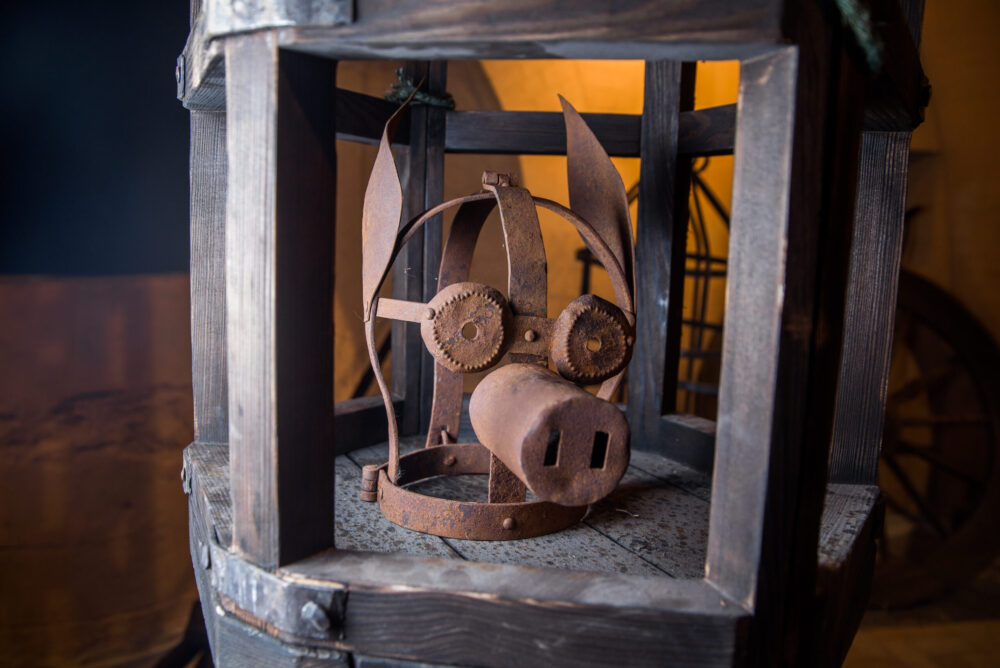Throughout history, tales of real torture have captured the imagination of many. The sheer brutality and ingenuity behind the use of ancient torture devices reflect a dark period where pain and suffering were tools of control. From the breaking wheel torture to other cruel methods, survivors of these horrors often defy the odds, showcasing incredible resilience and a will to endure despite insurmountable agony.
Ancient Torture Devices: A Grim Reality
The history of torture spans centuries, with various societies developing unique methods to inflict the maximum amount of pain. Ancient torture devices were often simple yet terrifyingly effective. One of the most infamous devices was the breaking wheel torture device. Known for its brutal method of shattering bones and leaving victims to suffer slowly, this technique exemplifies the cruelty of medieval punishments. Medieval executioners were tasked with administering these punishments, which were not only designed to execute but to prolong suffering.
The breaking wheel torture was one of the worst methods, but it wasn’t the only one. Other worst ancient torture devices include the Iron Maiden, the rack, and the thumbscrew. Each of these devices was designed to maximize torment, and those who survived often did so with incredible stories of endurance. Such stories offer a glimpse into the capacity for human survival in the face of unimaginable suffering.
Torture in the Medieval Era: Were the Methods Real?
Many wonder, were medieval torture devices real? The answer, unfortunately, is yes. Documented evidence from the Middle Ages proves the reality of these horrifying methods. These devices were not mere myths or exaggerated stories from the past; they were instruments of terror used to control, punish, and extract confessions. Visiting institutions like the Medieval Torture Museum in Chicago or the Medieval Torture Museum in LA offers a detailed look at these real-life instruments of cruelty. These museums bring the history of torture to life, showing visitors how brutality was once a form of justice.
The stories of girls getting tortured during this period are particularly harrowing. Many women were subjected to severe punishments, often based on accusations of witchcraft or moral indiscretions. These stories of female torture highlight the deep-rooted misogyny and fear that permeated medieval society.
Surviving the Breaking Wheel Torture
The breaking wheel torture was one of the most infamous punishments of its time. Victims were tied to a large wooden wheel, and their limbs were shattered using a heavy iron bar. This real torture was designed not only to kill but to prolong the victim’s suffering as much as possible. It wasn’t uncommon for the victim to remain alive for days, slowly dying from their injuries. Yet, remarkably, there are accounts of individuals surviving this torture for days, if not weeks, enduring agony that most of us today could never fathom.
In some cases, survivors of this torture were offered mercy, either through the intervention of sympathetic bystanders or the quick death of a fatal blow by the executioner. Still, their ability to survive such punishment stands as a testament to human resilience.
Exploring Torture Through Modern-Day Museums
For those fascinated by the dark past, visiting the Medieval Torture Museum in St Augustine offers a way to explore these ancient torture devices firsthand. These museums give a comprehensive view of how brutality was systematically used in various societies and allow visitors to question how humanity justified such horrific acts. The exhibitions are both educational and disturbing, providing a window into the suffering of those who endured these torturous methods.
Many may also find these museums among the more unconventional things to do in LA for adults or with friends, offering a unique experience. For history buffs or those with an interest in darker historical narratives, such museums are a stark reminder of the past. They also present an opportunity for reflection on how far we have come as a society.
If you’re looking for things to do in LA with friends, consider visiting one of these torture museums. It’s not only an eye-opening experience but also a sobering reminder of the fear and trauma inflicted by these methods. You can further explore these dark tales and real-life historical accounts by checking out the museum’s blog for more stories and insights into medieval torment.
Female Torture Survivors: A Unique Struggle
Throughout history, women have often been the target of specific forms of torture, and many of these stories of female torture are both tragic and heroic. Accused of crimes ranging from witchcraft to adultery, women faced unspeakable cruelty. Despite this, many women displayed remarkable strength in the face of imprisonment and suffering. Their survival stories are a testament to the fortitude of the human spirit, even when subjected to unimaginable trauma.
The Medieval executioners of the time often tailored their methods to induce both physical and psychological torment, particularly targeting women. These executions weren’t just about ending a life; they were a form of spectacle meant to intimidate and control the populace. Still, stories of survival from these horrific times continue to inspire and remind us of the power of resilience.
Reflections on the Past
In conclusion, the history of torture is a chilling reminder of humanity’s capacity for cruelty. Yet, the survivors of these brutal methods show that even in the face of the worst kinds of suffering, survival is possible. From the breaking wheel torture device to other ancient torture devices, the tools of the past were designed to break the body, but not always the spirit. As we reflect on these accounts, we must acknowledge the pain and suffering endured by those who came before us, while also remembering the importance of resilience and hope.
For those interested in delving deeper into these harrowing stories, visiting the Medieval Torture Museum in Chicago, LA, or St Augustine provides a unique opportunity to explore these dark chapters of history. Through exhibitions, artifacts, and stories, these museums offer a chance to reflect on the brutality of the past and the remarkable strength of those who endured it.







